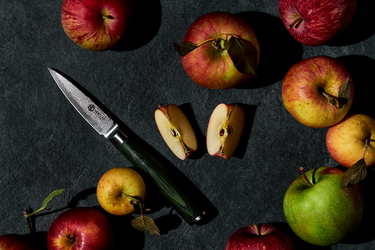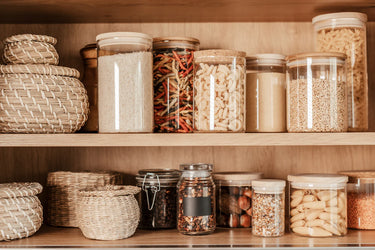Why Making Homemade Stock Is So Much Easier Than You Think

It doesn’t take much time in a grocery store to suss out the options for stock, and none of them are great. Short of paying for expensive, gourmet stock, the benefits of convenience don’t outweigh the cons of store-bought stock. Not only do they often have artificial flavors and stabilizers added, there is a lot of packaging waste.
There’s good news, though: Making homemade stock is not only easy, cost-effective, and eco-friendly, it can be made with the scraps of other meals. Once you have a generously-sized stock pot (we love our massive 10-quart version), all you need are leftover chicken or meat bones, vegetable scraps, and water. (Of course, if you’re vegetarian, then you can skip the bones and double the vegetable scraps.) With homemade stock, you can control the ingredients and amp up the flavor. Simmer for longer for deeper flavor or leave out the ingredients you don’t like, it’s up to you.
If you’re wondering what the difference between broth and stock is, the answer is simple: A stock is made with bones and is generally unseasoned (though adding a bit of salt does enhance the flavor) and a broth is made with meat and is seasoned. We won’t fault you for swapping the names around, what matters is that it’s a delicious addition to your cooking repertoire.
Here are the steps to making homemade stock:
Keep a freezer-safe zip top bag handy when you’re prepping ingredients for other dishes. Add the peels and trimmings to the bag, then return to the freezer. Add any bones from roasts or leftovers, too. Once the bag is full, then you’re ready to make a batch of homemade stock.
If you want a seasoned broth, add a tablespoon of broth per 4 quarts water. Peppercorns add extra flavor, as does a bay leaf. Add any parmesan rinds you’ve stored in the freezer over time to add richness and a dose of umami.
For every 2 pounds of ingredients (about 1 pound each bones and vegetables scraps works well) add 4 quarts water. Cover and bring to a boil over high heat, then reduce the heat to a gentle simmer. Leave the lid on to trap the delicious aromas that would otherwise evaporate. Cook for at least 30 minutes, or up to a few hours. The goal is to infuse the water with the flavors of the bones and scraps, so the longer the better, but a decent flavor can be achieved in just a half an hour.
The freezer is your friend for homemade stock. Unless you plan to use the stock within 4 days, it’s worth storing the stock in the freezer, where it can stay for around 3 months. If you use stock often, invest in quart-sized, freezer-friendly containers, since most recipes call for stock in 4-cup intervals.
Soups, stews, braises—stock is the base of so many dishes. The better the stock, the better the final product, and now you’ve got liquid gold in your kitchen. Use it to infuse rice and other grains with more flavor, stir homemade stock into a creamy risotto, or use in place of cream for a lighter version of mashed potatoes. Basically, anywhere you’d use water in savory dishes, it’s worth swapping in your homemade stock.
These ingredients do well in homemade stock:
While there are no hard and fast rules for stock ingredients, these tend to add mellow depth of flavor, without competing with the eventual dish.
- Meat and poultry bones
- Onions
- Leeks
- Garlic
- Carrots
- Celery
- Mushrooms
- Fennel
- Parsley
- Scallions
Leave out these ingredients from your homemade stock:
- Fish bones and shrimp shells (unless you are making a fish stock)
- Tomatoes
- Asparagus
- Eggplant
- Broccoli
- Bell peppers
Soon, saving scraps for stock will be second nature. You might even find yourself roasting an extra chicken simply to have more bones for stock.





